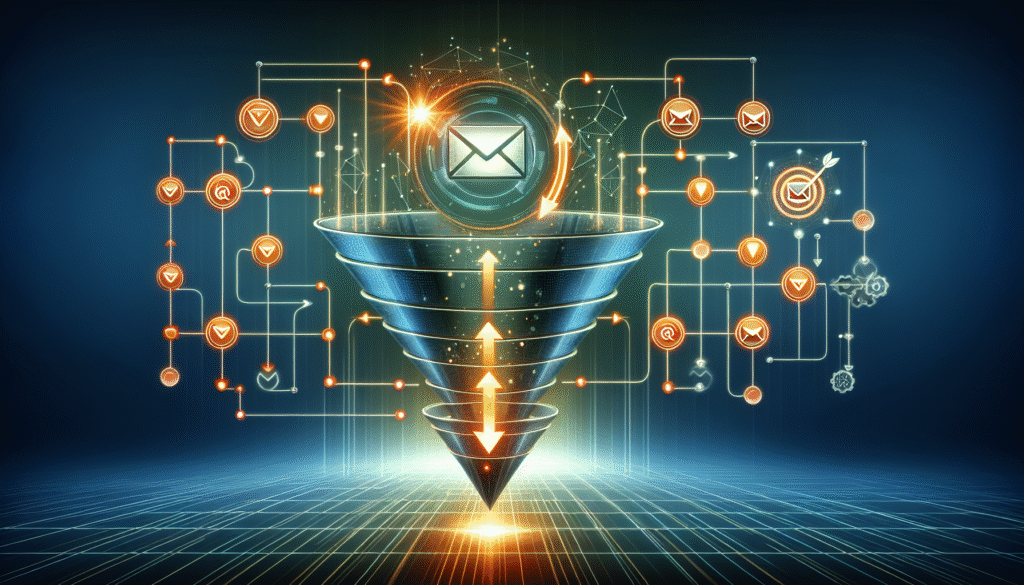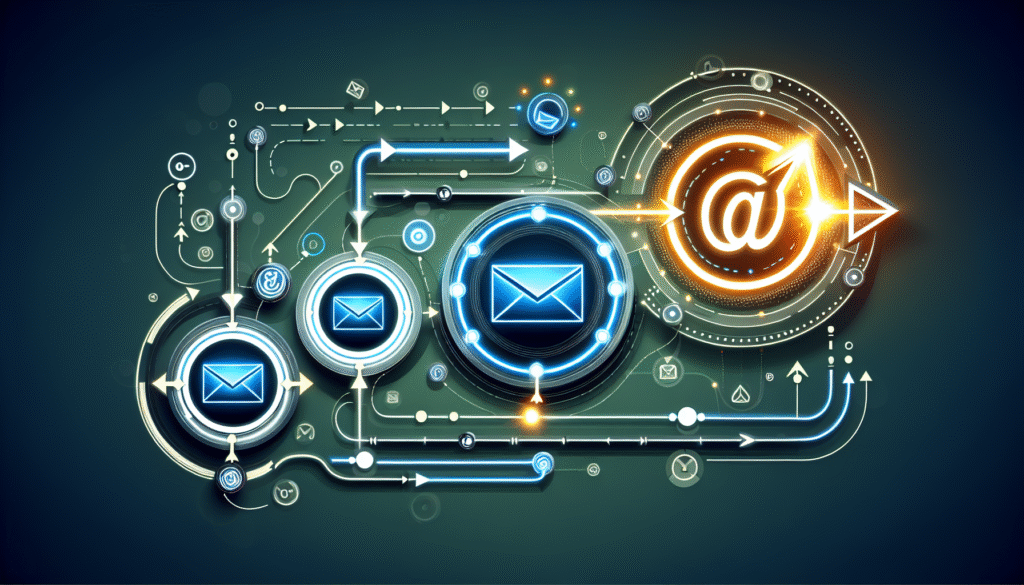Do email funnels really outperform landing pages in split testing? This question has intrigued marketers for years, igniting debates and driving countless experiments. As we dive into the heart of this inquiry, we aim to uncover some fascinating insights and thrilling revelations about how email funnels have not only kept pace with but sometimes surpassed the efficiency of landing pages.

The Anatomy of an Email Funnel
To understand how email funnels can outperform landing pages, we must first dissect what makes an effective email funnel. In its most basic form, an email funnel is a series of automated emails designed to lead prospects through a journey—each step meticulously crafted to nudge them closer to conversion. While landing pages focus on a single interaction, email funnels cater to ongoing engagement.
-
Lead Magnet: Our journey begins with an irresistible lead magnet—a crucial hook that attracts the audience and encourages them to subscribe to the mailing list. The magic of email funnels is rooted in their ability to keep prospects engaged over a period, nurturing them with content tailored to their interests.
-
Nurture Sequence: Once they opt-in, a sequence of nurturing emails, often educational or entertaining, builds rapport and trust. Here, we craft stories, provide value, and address objections. Over time, this sequence develops a deeper relationship than a fleeting landing page visit ever could.
-
Conversion Series: Finally, the conversion series focuses on turning engaged prospects into customers. By this point, the prospects know us well, and the decision feels less risky.
Why Email Funnels Can Outperform Landing Pages
Personalization
Personalization in emails isn’t just about using a recipient’s name. It’s about sending the right message, to the right person, at the right time. By leveraging data, we can segment lists and customize content, enhancing relevance and engagement. Although landing pages can be dynamic, they are inherently less personal than one-on-one communication through email.
Multi-Touch Engagement
Unlike landing pages that often end with a single interaction, email funnels ensure continuous engagement, moving prospects gradually through the funnel. Each email acts as a touchpoint, building on the previous ones to deepen the impact.
| Touchpoints | Email Funnel | Landing Page |
|---|---|---|
| Initial Contact | Lead magnet or opt-in | Landing page visit |
| Follow-Up | Automatic nurturing emails | Retargeted ads |
| Closing | Conversion email series | Subsequent pages |
Building Trust Over Time
Emails give us the chance to build credibility and trust over time. Through consistent, valuable communication, prospects feel a deeper connection and assurance in our offers. Contrarily, landing pages often rely on design and initial persuasive content to build fast trust, a tactic that doesn’t always succeed with skeptical users.
Lower Acquisition Costs
Testing email funnels often reveals lower customer acquisition costs. This is primarily because email funnels reuse existing infrastructure—our email lists—whereas landing pages frequently require additional costs for traffic generation through ads or partnerships.

Lessons from Split Testing Email Funnels vs. Landing Pages
Case Study: E-commerce Brand ABC
To better illustrate, let’s scrutinize a real-world example. Brand ABC tested a dedicated email funnel against a high-conversion landing page. Here’s what unfolded:
- Initial Opt-In: Both the email funnel and the landing page offered a 10% discount code upon signup. While the landing page had an immediate conversion spike, the email funnel started slower, accruing signups over a few days.
- Nurturing Phase: Over a week, the email funnel’s nurturing sequence resulted in higher engagement rates (e.g., opens and clicks), leveraging personalized content.
- Conversion Rates: At the end of the test, purchases from the email funnel were 20% higher due to repeated exposure to offers and brand messages.
This case isn’t isolated. Many marketers have found similar outcomes in discussions and split tests.
Common Mistakes in Email Funnels and Tips
Creating effective email funnels isn’t without its pitfalls. Some common mistakes include over-automation, lack of segmentation, and ignoring data analysis. Here are tips to avoid these errors:
-
Avoid Over-Automation: Customize emails where possible. Balance between automated sequences and personal touches obtained through data insights.
-
Segment Properly: Not all subscribers are the same. Use demographic, interest, and behavioral data to create precise segments.
-
Analyze Metrics: Regularly track and optimize based on open rates, click-throughs, and conversion analytics. Use A/B testing to refine content.
Creating an Effective Email Funnel Strategy
Steps in Crafting a Successful Email Funnel
-
Define Objectives: Begin with end goals in mind. Are we building a community, selling a product, or promoting a service?
-
Choose the Right Tools: Select email marketing platforms that allow personalization, automation, and analytics.
-
Craft Engaging Content: Each email should add value, be it information, humor, tips, or product insights.
-
Map Out Your Funnel: Visualize the journey from lead magnet to loyal customer. Identify key phases and transitions.
-
Perform Regular Audits: Revise and improve your funnel as market conditions and consumer behaviors evolve.
Key Metrics to Monitor
Effective funnels require consistent monitoring. Here are critical metrics worth noting:
- Open Rate: Indicates subject line effectiveness.
- Click-Through Rate (CTR): Reflects the interaction level.
- Conversion Rate: Final measure of success.
- Bounce Rate: Identifies potential delivery issues.
- Unsubscribe Rate: Helps gauge recipient dissatisfaction.
Concluding Thoughts
Email funnels, when executed well, offer a potent alternative to landing pages, providing sustained interactions and nurturing potential leads into devoted customers. Their ability to consistently engage and build trust over time makes them formidable tools in a marketer’s arsenal. While both funnels and landing pages have their advantages and places within a marketing strategy, the dynamic and evolving nature of email funnels offers exciting opportunities for those willing to embrace their potential.
By consistently refining our approach and focusing on the customer journey, we can harness the full power of email funnels to achieve goals beyond what static landing pages might traditionally offer. So, let’s rethink our strategies and explore how email funnels might just be the game-changer we need in the ever-evolving digital landscape.
